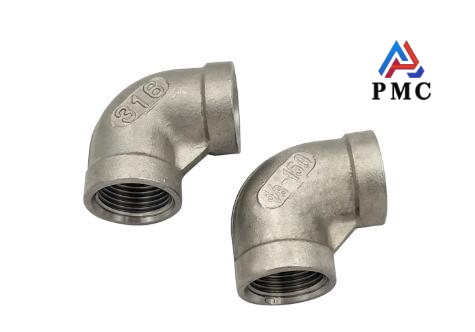
Introduction of 316 Stainless Steel Elbows
In the piping system, 316 stainless steel elbow is a crucial pipe fitting, which is used to change the direction of the pipeline. It is made of 316 stainless steel, which is an austenitic stainless steel containing molybdenum and has good corrosion resistance and heat resistance. There are many standards for manufacturing 316 stainless steel elbows, including national standards, electrical standards, water standards, American standards, German standards, Japanese standards, etc. Different standards have clear provisions on the size, material, pressure level, manufacturing process, etc. of the elbows. When selecting 316 stainless steel elbows, it is necessary to select products that meet the corresponding standards according to the specific engineering requirements and use environment to ensure that their quality and performance meet the engineering needs.
Characteristics of 316 stainless steel elbow
The reason why 316 stainless steel elbows stand out among many pipe fittings is that they contain molybdenum, which gives them many excellent properties. In terms of resistance to chloride corrosion, the addition of molybdenum greatly enhances the pitting and crevice corrosion resistance of 316 stainless steel elbows. 316 stainless steel elbow also has good high temperature resistance, and its temperature resistance range is roughly between -20℃ and 400℃. In this range, it can maintain good corrosion resistance and mechanical properties.Even at temperatures as high as 1200℃ - 1300℃, it can still maintain good stability. This feature makes it widely used in many high-temperature industrial fields, such as chemical industry, electric power and other industries.
In terms of intergranular corrosion resistance, 316 stainless steel elbows perform well. When stainless steel is heated in the temperature range of 450℃ - 850℃, chromium carbide is easily precipitated at the grain boundaries, resulting in a decrease in the chromium content near the grain boundaries, thus inducing intergranular corrosion.
316 stainless steel effectively reduces the precipitation of chromium carbide and the risk of intergranular corrosion by controlling the carbon content and the effect of molybdenum. In some piping systems that require frequent welding operations, the intergranular corrosion resistance of 316 stainless steel elbows is still good after welding, ensuring the reliability of the entire piping system.

Advantages of 316 stainless steel elbows
The advantages of 316 stainless steel elbows are obvious. From the perspective of economic cost and environmental protection, they have strong corrosion resistance and long service life, which greatly reduces leakage and replacement frequency caused by corrosion, thereby reducing maintenance costs. Taking ordinary carbon steel elbows as an example, in some corrosive environments, they may need to be frequently treated with anti-corrosion and need to be replaced after a few years of use. However, 316 stainless steel elbows do not require frequent anti-corrosion due to their own characteristics and can be used for decades, reducing the use of chemical coatings and environmental pollution. It also avoids the impact and losses on production and life caused by pipeline maintenance and replacement.
In terms of applicability, the high strength and wear resistance of 316 stainless steel elbows enable them to maintain good performance under high wear conditions and are not easily damaged, reducing downtime and maintenance costs caused by wear.
And it has good size compatibility and can be seamlessly connected with a variety of pipeline materials. Whether it is steel pipes, copper pipes or some new composite material pipes, as long as the corresponding standards are followed and the appropriate connection method is selected, reliable connection can be achieved. This feature improves the reliability and flexibility of the entire pipeline system, enabling it to play an important role in various complex pipeline systems.
How to choose the right 316 stainless steel elbows?
In practical applications, it is very important to choose the right 316 stainless steel elbow. First of all, the use environment should be considered. If it is in a highly corrosive chemical environment, it is necessary to focus on whether its corrosion resistance meets the standard; if it is in a high-temperature industrial scene, temperature resistance is the key. At the same time, the requirements of the pipeline system cannot be ignored. For example, the pressure level of the pipeline must ensure that the pressure resistance of the elbow matches it to prevent safety hazards such as leakage under high pressure; and the diameter of the pipeline must select elbows of appropriate sizes to ensure a tight and firm connection.
In addition, cost factors, production technology, brand reputation and product after-sales are all aspects that need to be weighed when choosing. Only by comprehensively considering these factors can you choose the 316 stainless steel elbow that best meets your needs and ensure the efficient and stable operation of the entire piping system.
Read more: Analysis of 30 Degree Stainless Steel Elbow


